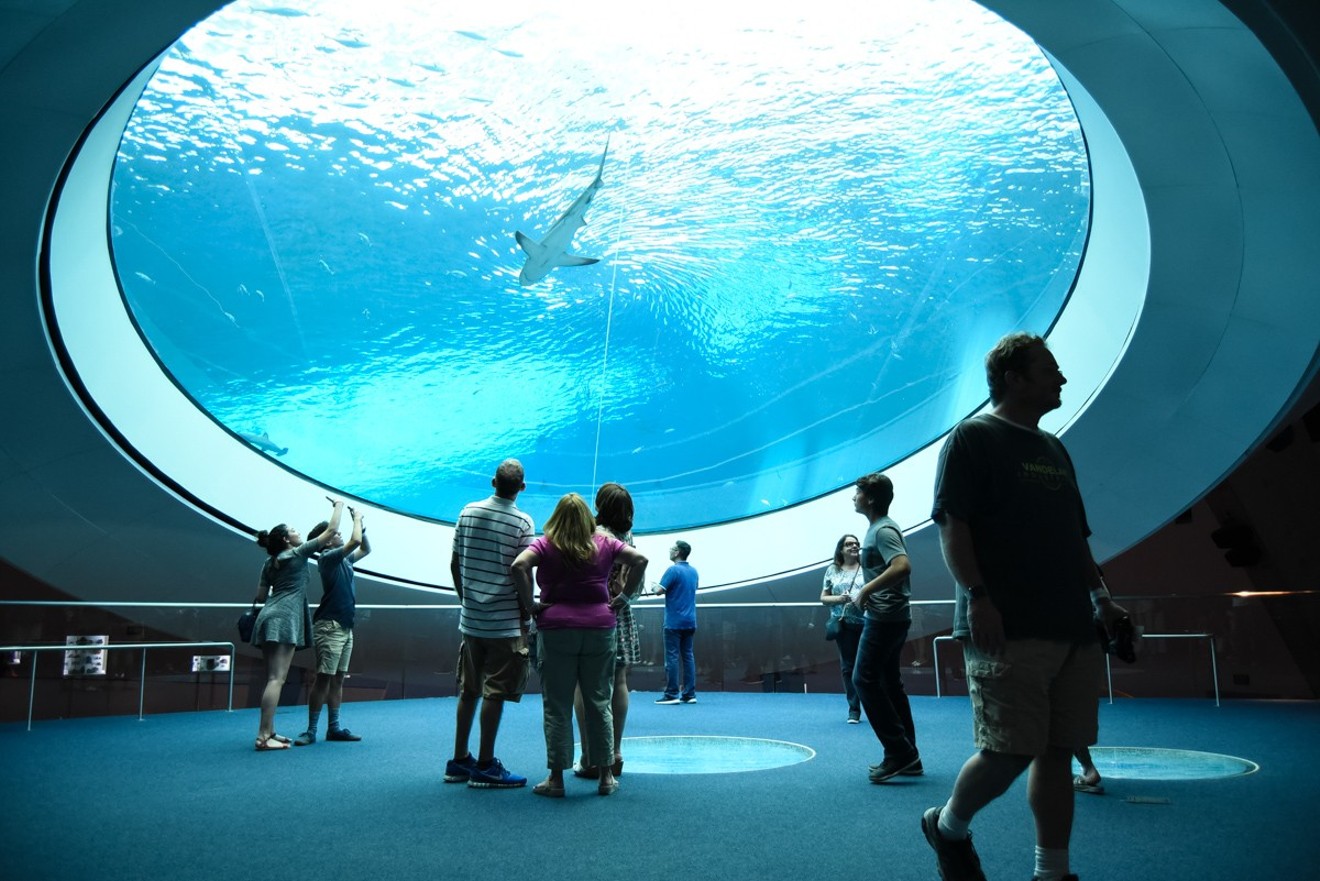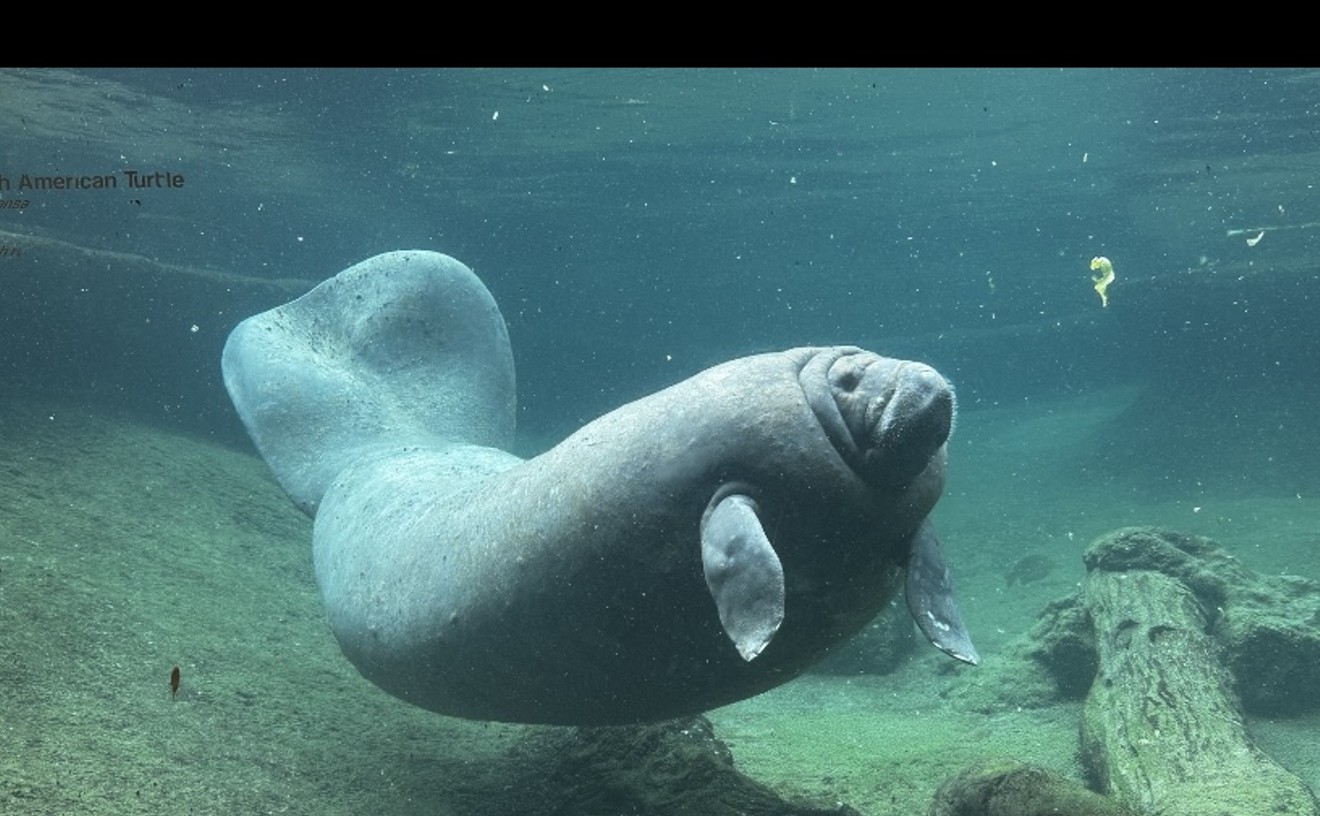When you think of a deadly shark season, you likely picture blood in the water, severed limbs, and the ominous two-note tuba from Jaws. But a three-month span at the Frost Science Museum last year saw three shark deaths, the first shark mortalities recorded at the museum since opening in 2016.
Records obtained by New Times from the Florida Fish and Wildlife Conservation Commission (FWC) show that between September and December of 2021, two juvenile scalloped hammerheads and one adult silky shark belonging to Frost Science died in captivity of various causes. Both species are globally endangered or threatened by overfishing and the shark-fin trade, which kills millions of sharks per year. The death of the young hammerheads highlights a disease afflicting sharks that experts know little about.
On August 4, Frost Science received a shipment of three juvenile scalloped hammerheads, a critically endangered species, from a licensed partner, according to Andy Dehart, vice president of Animal Husbandry & Marine Conservation at Frost Science. Dehart, a shark enthusiast since childhood, says the museum acquired the endangered sharks to educate kids and adults about the species to help conservation efforts.
"We want to build awareness of what's going on with the shark-fin trade. These hammerheads are great ambassadors for their species. We want people to learn more about them and fall in love with sharks," Dehart tells New Times.
But something was wrong when the young hammerheads arrived.
One of the sharks showed immediate signs of fusarium, a fungus that lives in underwater environments and commonly infects sharks, and hammerheads in particular. The fungus can cause chronic dermatitis and inflammation of the blood vessels and has an 88 percent mortality rate among sharks at Adventure Aquarium in New Jersey, according to a 2017 research paper by veterinary scientist Michael Hyatt. Little is known about the infection or how to properly treat it.
"We had put them into quarantine and a holding facility as part of our protocols with new animals, and upon arrival one had warning signs of fusarium. Fungal infections are one of the hardest disease pathways to resolve," Dehart explains.
Frost Science began contacting other aquariums across the U.S. and as far away as Japan for advice on how to treat the infection.
But their efforts were unsuccessful: The first hammerhead died on September 5. The infection also spread to the other two hammerheads in quarantine, one of which died on December 14.
The silky shark, a threatened species, had been with Frost Science since the museum's opening in 2016. It died during the same three-month span, though it was not in the same tank and museum staff have not determined what killed it.
"It had trouble navigating and wasn't swimming well. We tried antibiotics and steroids and worked with that animal for three hours straight to resuscitate it before we made the call to euthanize the animal," Dehart says.
Autopsy data for the silky shark was sent to pathologists and laboratories. Dehart says Frost Science is still waiting to hear back.
The third hammerhead Frost Science acquired remains in medical quarantine and is showing signs of the fusarium infection. Biologists at the museum are treating it with antifungal medication and steroid injections.
Dehart says he's unsure whether fusarium is becoming more common among sharks in the wild but says animals acquired in recent years arrive with a host of issues due to ocean pollution and climate change, including parasites and a range of infections. Fusarium is also known to be common in bonnethead sharks, a type of hammerhead that lives in Biscayne Bay, Dehart adds.
"We’re saddened by this loss," he says. "We’ve worked very hard. We feel confident that when you can put kids, adults, older people face to face with animals it can be magical."
[
{
"name": "Air - MediumRectangle - Inline Content - Mobile Display Size",
"component": "19274298",
"insertPoint": "2",
"requiredCountToDisplay": "2"
},{
"name": "Editor Picks",
"component": "17482312",
"insertPoint": "4",
"requiredCountToDisplay": "1"
},{
"name": "Inline Links",
"component": "18711090",
"insertPoint": "8th",
"startingPoint": 8,
"requiredCountToDisplay": "7",
"maxInsertions": 25
},{
"name": "Air - MediumRectangle - Combo - Inline Content",
"component": "17482310",
"insertPoint": "8th",
"startingPoint": 8,
"requiredCountToDisplay": "7",
"maxInsertions": 25
},{
"name": "Inline Links",
"component": "18711090",
"insertPoint": "8th",
"startingPoint": 12,
"requiredCountToDisplay": "11",
"maxInsertions": 25
},{
"name": "Air - Leaderboard Tower - Combo - Inline Content",
"component": "17482313",
"insertPoint": "8th",
"startingPoint": 12,
"requiredCountToDisplay": "11",
"maxInsertions": 25
}
]













